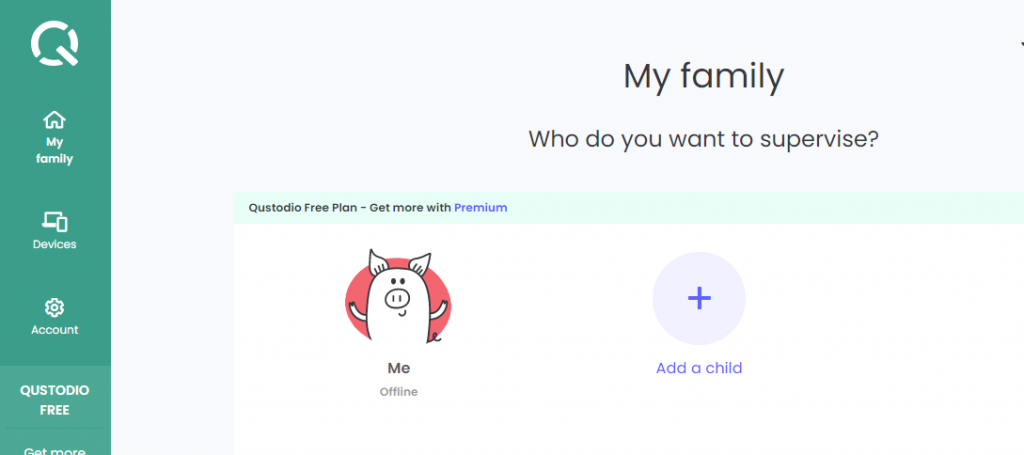
This section covers the physical barriers we will set up to protect our families as they use technology. These barriers may seem difficult to maintain, like a castle’s walls, but they are really rather simple. Physical barriers can protect us practically as well as spiritually. In addition to keeping out unwanted content, they protect us from spies and thieves.
The most important thing to remember is that all walls can be overcome. We use them when we can, but we put our trust in God.
Some trust in chariots, and some in horses;
Psalms 20:7
But we will remember the name of the Lord our God.
There are many different ways to secure a system or network, and many different filtering and accountability packages. Here we are going to present a single set up for a family. The packages named are commonly used in our community, but other packages suit some people better. If you are already using different software and confident in your set up that’s fine – these pages should only serve as a reinforcement check for you.
If your network is not secure or filtered, the purpose here is to get your network secured and filtered quickly. You can look into other packages or fine tuning later as you become more confident.
Basic Security
This might considered the castle moat, or the outer wall – it is the first line of defense. These basic precautions are to keep unauthorized users from accessing your devices, and your network, to possibly steal data, or even watch or communicate with your children without your knowledge.
Every PC and personal device (tablet, smartphone) should be secured by password/passphrase, PIN, fingerprint or facial recognition. Set all devices to lock after a reasonable period of inactivity. Turn PCs off when not in use.
Parents must have access to children’s personal devices. Note that smartphones and PCs with fingerprint access can be set up to accept multiple fingerprints.
Sensitive Software (your banking app, bookkeeping software, email, etc.) should have a different password than used to access the device. If someone should gain access to your device, they won’t get automatic access to your bank account. Do not use the same password for everything – if the site or application allows, use a three or four word phrase instead of a single word. This has the dual benefits of being harder to crack and easier to remember.
Passwords are an unfortunate fact of computer use – if you have trouble remembering them you might want to invest in a password manager.
If your home has WiFi, secure it. Follow the instructions for your WiFi router. It is easy, and your family’s devices only need to be set up once. If your WiFi is secured no one can sit across the street and use your connection (which is connected to your account by IP address) for any evil purpose.
If you use your smartphone or tablet as hotspot, you need to secure it as well. If nothing else, this will prevent others in the coffee shop from running up data charges on your phone bill!
All PCs should have firewalls enabled. Windows PCs must run anti-virus software (Windows 10, 11 have Defender by default – make sure it is enabled and up to date).
Filtering
Like the physical world, the internet contains a lot of material you are not interested in, and a lot of material you don’t want yourself or your children to even see. Content filtering gives you control over what comes into your network and what can be viewed on your family’s devices.
Like all physical barriers, filters can be defeated – primarily from within. It is most important that your child understand the value of filters – that they are protected by the filter and want to have it on their device as a helper for them, not an opponent to be overcome.
Filtering PCs and WiFi
If your home has WiFi, or you have PCs or Macs connected to the internet, go here now:
Sign up for either OpenDNS FamilyShield (for a preconfigured setup), or OpenDNS Home (If you want to be able to select your filter settings). Both options are free.
Since OpenDNS was purchased by CISCO, the setup guide links are down. Don’t worry – you can find instructions for your devices here: https://support.opendns.com/hc/en-us/categories/204012907-OpenDNS-Device-Configuration.
You will want to set up OpenDNS on your WiFi router, and install the IP updater application on one PC on your network. You need this because unless you are a business customer, your internet provider will change your base IP address from time to time. If all this seems to complicated, or you’re worried about breaking something, feel free to contact your Tech Helper.
If you were able to set up OpenDNS on your WiFi router, all devices that connect to your WiFi are now filtered. If anyone on your network tries to access a site with restricted content, they will either receive an OpenDNS error message saying the content is blocked, or a network error. If you’re feeling creative, you can even set up your own custom block message page.
The content is blocked before it ever reaches your network. There is no performance hit because nothing runs on your devices, the request is simply denied by the name server.
Filtering SmartPhones
If you like saving money, any smartphones in your family are set to connect to your home WiFi automatically when they’re in range. So when they’re at home, they’re filtered. But the whole purpose of the phone is to not be home all the time, so it needs to have its own filter for when it’s not connected to your home network.
For simplicity and performance, we’d like to install just one thing on the phone. Since we will also want to have accountability software, we’ll use a Parental Control package that includes content filtering. The most popular package in the conference seems to be Qustodio, with some preferring MobiCip. There are many packages with varying capabilities and costs. Here is a good round up. These packages really aren’t cheap, so it wouldn’t hurt to invest a little time in the reviews, and ask some of your brothers and sisters how they like what they use.
Since the most users are on Qustodio, we’ll focus on it, since that means there is the best chance of getting help with it if we have questions.
Installation is straightforward. Go to:

And sign up for the package that suits. Log in on the web interface, and add each child or device by name. Now go get each device, and find the Qustodio Kids app in the Google Play Store or Apple App Store. Install the app, enter the correct name, and in Android, give the app permission to access all the things it asks for. (Normally you would question every permission an app demands, but in this case you want it to monitor most everything).

Once the app is installed in running, you can go to the devices menu on the web interface, and see that the device is protected.

You can choose a device and edit the filter settings for that device, including setting times of use, and use of particular applications.
You can also have the device send an alert when a blocked site is requested, send you daily or weekly summaries of usage, and view up to date usage reports online.
The next step is to talk to your family. Explain what the filters and accountability software do, and why you have installed them (because you love them and want to protect them is always a good start). Keep the conversation going, go back to it regularly. If they find they cannot view or use something they did before, you have a great opportunity to look at it together, know what they’re looking at and why, and decide if it should be allowed, or left blocked.
Now the walls are up, but you still have to stand watch. Be careful when viewing reports – software isn’t always right, there can be “false positives”. If you see something on a report that you need to discuss, approach it in a loving way, and prefer your child’s testimony to the software’s. The important thing is to be able to talk about it, and it reminds them that you’re watching, but you do trust them. Also don’t wait to get reports – talk regularly to keep communication open.
You shall teach them to your children, speaking of them when you sit in your house, when you walk by the way, when you lie down, and when you rise up.
Deuteronomy 11:19
